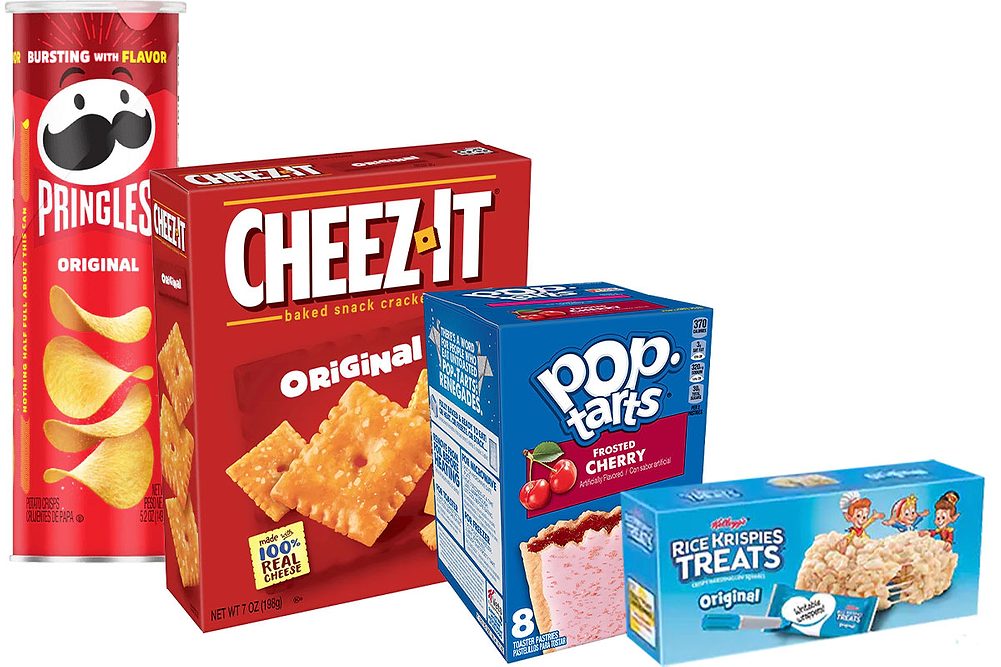BATTLE CREEK, MICH. — Persistent bottlenecks, supply chain shortages and high inflation continued to trouble Kellogg Co. in the third quarter ended Oct. 1. Through all of it, the company delivered financial performance that exceeded expectations, said Steven Cahillane, chairman, chief executive officer and president, during a Nov. 3 conference call with analysts to discuss third-quarter results.
“It stopped getting worse,” Mr. Cahillane said of the ongoing set of challenges faced by Kellogg in the quarter. “But there's not a meaningful improvement in it.
“We continue to improve our service levels in spite of persistent bottlenecks and shortages of everything from materials and equipment to trucks and containers. We also continue to mitigate the profit impact of exceptionally high cost inflation with good execution of productivity initiatives and revenue growth management actions.
Kellogg’s net income in the quarter ended Oct. 1 was $312 million, equal to 91¢ per share on the common stock, up 2% from $305 million, or 90¢ per share, in the same period the previous year. Sales in the third quarter rose 9% to $3.95 billion from $3.62 billion.
“Our net sales in quarter three grew more than 13% year-on-year on an organic basis, coming in higher than expected and bringing year-to-date
organic growth to 10%,” said Amit Banati, chief financial officer. “Our adjusted basis operating profit grew 4% on a currency-neutral basis in quarter three, overcoming the impact of high costs, bottlenecks and shortages, and increased investment. This, too, was better than expected, and it puts our year-to-date growth at a similar 4%.
“On an adjusted basis, earnings per share declined 3% on a currency-neutral basis in quarter three due to the as-anticipated reduction in pension income related to remeasuring the pension assets and interest rates. Nevertheless, through the end of the third quarter, our EPS was up 3% on this currency-neutral adjusted basis.”
North America business unit sales in the third quarter were $2.34 billion, up 13.6% from $2.06 billion in the third quarter of fiscal 2021. The business unit’s operating profit decreased by 2% as growth in net sales was more than offset by cost pressures, increased onetime charges, and higher brand-building investment, according to the company.
“Our sales growth was led by what is by far our largest business in North America, and that's snacks,” Mr. Cahillane said.
Cereal in the quarter reached double-digit growth, which he said was roughly in line with consumption growth. The company’s frozen business suffered from supply constraints, which was aided by newly installed waffle capacity.
“At the same time, work continues on the planned separations, which we announced in June,” Mr. Cahillane said. “Our recent milestone was the announcement of our North America cereal company leadership team, and we continue to work on organizational design and carve-out financials.”
The company’s snacks brands sustained their momentum in the quarter, Mr. Cahillane said.
“Pringles, with $2.5 billion in annual net sales globally, once again generated double-digit consumption growth in virtually every one of our major markets around the world. Cheez-It, with over $1 billion of annual net sales, sustained its double-digit growth in quarter three both in Canada and the US, where our new Puff platform has been incremental to the franchise.
“Pop-Tarts, closing in on $1 billion of annual net sales, continued to post good growth in the third quarter in its primary market, the US, while continuing to show why we believe it has so much promise internationally. Rice Krispies Treats, with $0.5 billion of annual net sales, was supply constrained in the US during the third quarter and still grew consumption in the mid-single digits, with its new Homestyle sub-line proving to be incremental to the franchise.”
In Europe, Kellogg’s net sales fell 10.9% to $562 million, due to adverse currency translation. “Ever since the war broke out in Ukraine, we've known that Kellogg Europe would have two very different halves of the year,” Mr. Cahillane said. “Because as we suspended Pringles shipments into Russia right away during the first quarter, it took some time to work through inventories.
In Latin America net sales rose 12.6% to $283 million, and in Kellogg’s Asia Pacific, Middle East and Africa business unit sales were up 12.2% to $767 million.
In releasing third-quarter results, Kellogg raised its guidance for adjusted earnings per share to grow approximately 3% on a currency neutral basis for the full fiscal year, up from prior guidance of approximately 2%. The company said the increase reflects an improved operating profit outlook, partially offset by a further reduction in non-operating, non-cash pension income, stemming from a remeasurement that now reflects this year's higher interest rates and sharply lower equity and bond values.
On Nov. 3, investors showed some reticence in mid-day trading as Kellogg’s stock price on the New York Stock Exchange fell 7.31% to $70.28, from the previous day’s close of $75.82.
In the first nine months of 2022, Kellogg net income was $1.06 billion, equal to $3.11 per share, essentially flat from $1.06 billion, or $3.09 per share in the same period a year ago. Sales were $11.48 billion, up 6.7% from $10.76 million.




